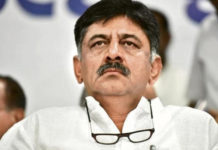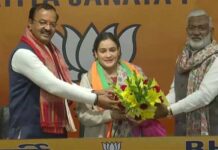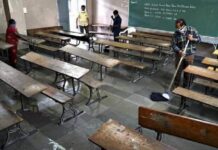In 2019, a series of austerity measures were introduced in Lebanon. Noticeably was the increase in taxes on gasoline and online phone calls. This so-called WhatsApp tax led to a national wave of protests. The protests began on 17 October 2019, when hundreds of protesters occupied downtown Beirut, the nation’s capital., and grew from there. As the protests spread, so did the issues spread, to corruption, sectarianism, unemployment, lack of state accountability, and need for basic services. Protesters have complained that since 1990, electricity has been provided at 80% of demand.
The protests are leaderless and have led to the resignation of Prime Minister Saad Hariri, son of former Prime Minister Rafic Hariri, in December 2019. They continue. Unlike previous struggles in Lebanon, these protests have resisted any sectarian, political or international patronage, and continue as an expression of dissent.
The resignation of Saad Hariri left a political vacuum, which has caused the International Monetary Fund and the World Bank to put pressure on the state to put up a government that can manage the situation better. On 21 January, Hasan Diab became the newest Prime Minister. Diab attempted to balance American and Iranian interests, owing to his good relations with Hezbollah and a cabinet packed with American nationals. His government is likely to continue with the policies that the protesters are agitating against.
Making of Lebanon
Lebanon was a country designed to be unstable. With the defeat of the Ottoman Empire in World War I, Syria and Lebanon came under the control of France. The colonial powers defeated the Ottoman’s in an alliance of a growing Arab solidarity movement but betrayed them when they created the new countries from the Ottoman Empire.
Religion was the basis of a divide and rule strategy. At Lebanon’s independence in 1943, about half of the country was Christian. The most prominent Christian sect, the Maronites, a third of the population. Nearly a third of the population was Muslim, and the remaining population was composed of local religions. So the French Mandate of Syria was partitioned on communal lines to give a country to the region’s Christian population, the Maronites. This country became Lebanon.
After the partition of Syria, Lebanon was a free market bastion in a region of the world that had more state control. Syria, Egypt, and Iraq began to adopt Secular Socialist states based on Arab Nationalism.
The communal nature of the divide haunted Lebanon. The Christian-Muslim split had regional and urban-rural dimensions. In the 1970s, many people migrated from rural areas to urban areas. Communal tensions flared up. Some groups, mostly Sunni, advocated for reunification with Syria.
Hezbollah
The tensions led to a 15 year Civil War in Lebanon from 1975 to 1990. In this period, Hezbollah arose as a powerful political force in Lebanon. It worked with local Shia leaders and drew international support from Iran. It continued its presence even into the current day with a militant stand against the United States and Israel. Hezbollah’s organizational structure runs between that of an organized state and a religious community. As a well-organized group without a traditional state structure, it has become a threat to American and Israeli presence in the Middle East, often being compared with Iran and Russia in terms of its adversarial relationship with the United States.
Lebanon as a Neo-liberal station
Lebanon occupied a strategic place, culturally, economically and militarily for Western powers and their allies in the Middle East. There was a fear from the Western powers that Lebanon would reunite with Syria. The Lebanese Civil war had an international dimension. The different factions of the war called for reunification with Syria, the democratization of the Lebanese government, neo-liberal reforms, state control over the economy, etc.
In 1990, to accommodate the changing demographics of the country and to end the Civil War, Lebanon adopted a new constitution that protected market interests. It also made concessions to the Shia and Sunni communities by way of communal representation in the government. Christians would keep influence over the military, and Muslims would have more presentation in Parliament. The Prime Minister would be a Sunni Muslim. The government design made sure that trade would be unhampered. Lebanon was an example of the weak state that would facilitate neo-liberal interests.
The first Prime Minister after the Civil War was Omar Karimi from the Arab Liberation party, an offshoot of the Dignity movement, which supported pan-Arab solidarity. His regime lasted just over a year. The next major Prime Minister was Rafic Hariri, a business tycoon, and father to the recently deposed Saad Hariri, who implemented many of the neo-liberal reforms, which contributed to today’s crisis. He was President of Lebanon in 1992-1998 and again from 2000-2004. He was known for his corruption, where his personal assets jumped 16-fold from 1992 to 2005 when he died. In 1994, he began to use the military to crush public dissent. He was also known to use the reconstruction of Beirut to give contracts to other rich business moguls.
Inequality in Lebanon become the highest in Asia. Corruption in government services increased. The public deficit rose through the 1990s. In the 2000s, Lebanon borrowed heavily internationally. By 2019, the public debt was one and a half the total GDP of the country.
Tension in the country
In the 1990s and 2000s, dissent was kept suppressed. Hariri lost the election to Karimi in 2004, leading to a pro-Syrian tilt in the state. In February 2005, Rafic Hariri was assassinated. Western powers blamed pro-Syrian forces in the country. In the aftermath, the Independence-05 movement, where nearly 10 lakh people came to the street in protest. This was called the Independence Intifada by the Arab world. In the western world, it was called the Cedar Revolution, a reference to the tree on the Lebanese flag. The protests were supported by America and France, calling it a democratic struggle. It was condemned by Syria and Iran. The result of the protests was an end to the Karimi government. Hariri’s party continued to keep a prominent role in parliamentary politics over the next fifteen years.
The invasion of Syria and Iraq by America also led to instability. The Syrian refugee crisis and the spillover of the conflict into Lebanon made the next decade violent and unstable. Lebanon had a population of nearly 70 lakhs and hosted 15 lakh, Syrian refugees. As the Lebanon nation was based on a truce based on sectarian balance, the influx of refugees caused insecurity to the population.
In 2019, the current wave of protests began. These protests are different from the Independence-05 movement, in that they do not have any international patronage and are critical of all sides, including the reunification movements, Hezbollah, Iran and the United States. The movement has come as an undying expression of frustration by the people of Lebanon against the current state of things. Underlying the protests is a frustration with a state that is both indebted to foreign powers and usurious against its own people. The protesters have been chanting, “All of them means all of them,” indicating that they are done with the rearrangement of power, as was done in the past. What the future holds, remains to be seen.




























[…] in an economic crisis with large-scale unemployment, food crises, poverty, and national debts, Lebanon had seen mass protests in October last year. These protests were sparked off by a series of austerity measures that were introduced in Lebanon, […]